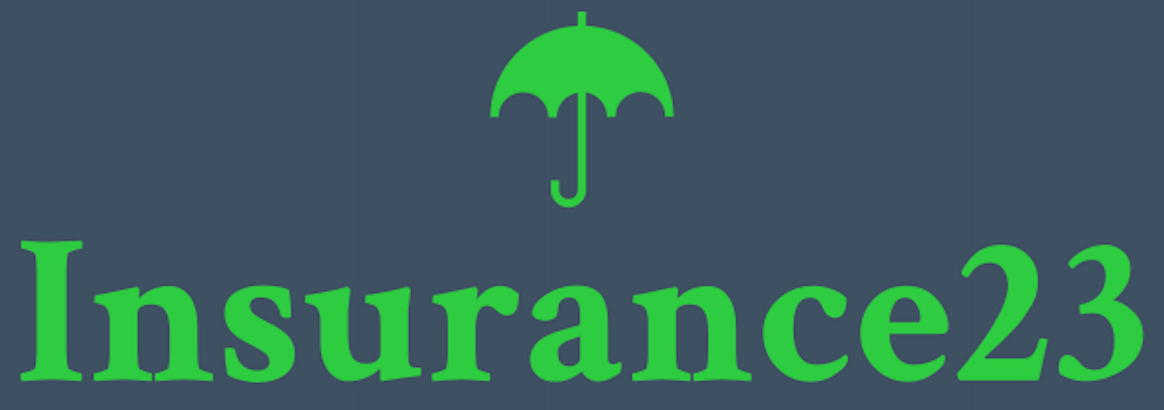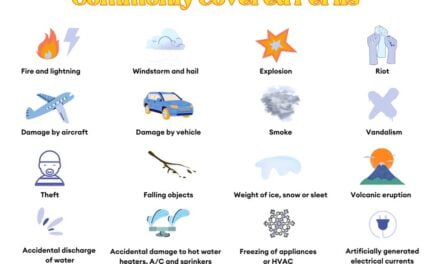Finding the right home insurance is crucial for protecting your biggest investment. Many companies offer different rates and coverage types, so it’s important to compare top home insurance companies. According to recent rankings, Westfield, State Farm, and USAA are among the top-rated home insurance providers for 2025.

The best homeowners insurance companies combine affordable premiums with solid coverage options, excellent customer service, and strong financial stability. Companies like Amica and Erie consistently rank high in customer satisfaction surveys, while others like Allstate offer special features such as identity theft protection or extended dwelling coverage.
Regional availability matters too, especially in states with unique risks. For example, California homeowners have specific options with USAA, Travelers, Mercury and Lemonade standing out as top choices in that market.
Key Takeaways
- Top-rated insurance companies balance competitive rates with comprehensive coverage and excellent customer service.
- Financial stability ratings are critical indicators of an insurance provider’s ability to pay claims during widespread disasters.
- Premium costs vary significantly between companies based on location, home characteristics, and available discounts.
Analyzing Home Insurance Company Ratings

Understanding how insurance companies are rated helps homeowners make informed decisions about their coverage. These ratings examine various aspects of an insurer’s performance from financial stability to customer service quality.
Financial Stability and AM Best Ratings
AM Best provides ratings that indicate an insurance company’s financial strength and ability to pay claims. Ratings typically range from A++ (Superior) to F (In Liquidation), with anything above B+ considered good.
Companies like USAA, Amica, and Allstate frequently earn high AM Best ratings. For example, Amica consistently receives A+ ratings, demonstrating strong financial health.
When comparing insurance providers, look for companies with at least an “A” rating. This indicates the insurer has the financial resources to honor claims even after widespread disasters that might trigger many claims simultaneously.
Financial stability ensures your claims will be paid regardless of economic conditions or catastrophic events. This provides crucial peace of mind when selecting a home insurance provider.
Customer Satisfaction and J.D. Power Scores
J.D. Power scores measure customer satisfaction through comprehensive surveys of policyholders. These scores reflect overall service quality, pricing satisfaction, and policy offerings.
In recent rankings, USAA, Amica, Allstate, and Auto-Owners consistently placed in the top five for customer satisfaction. These companies excel at providing clear policy information and responsive customer service.
J.D. Power rates companies on a 1,000-point scale, with the industry average typically falling around 800 points. Companies scoring above 830 generally deliver superior customer experiences.
High customer satisfaction often correlates with:
- Clear communication
- Transparent pricing
- Helpful representatives
- User-friendly digital tools
- Efficient problem resolution
When comparing insurers, consider both the overall satisfaction score and specific categories most important to your needs.
Claims Satisfaction and Handling Efficiency
Claims handling represents the true test of an insurance company’s value. Amica and State Farm consistently rank highly for claims satisfaction according to recent surveys.
Key metrics in claims satisfaction include:
- Speed of response: How quickly adjusters contact you after filing
- Ease of filing: Simplicity of the claims process
- Settlement fairness: Fair compensation without unnecessary disputes
- Communication quality: Clear updates throughout the process
Westfield earned high marks for claims handling efficiency in recent rankings. Their streamlined process minimizes paperwork and speeds up settlements.
Claims satisfaction data reveals how companies perform when you need them most. A company with excellent premiums but poor claims service may cost you more in frustration and inadequate settlements when disasters strike.
National Association of Insurance Commissioners (NAIC) Complaint Ratio
The NAIC complaint ratio provides an objective measure of consumer complaints against insurance companies. This index compares the number of complaints to a company’s market share.
A ratio of 1.0 represents the industry average. Ratios below 1.0 indicate fewer complaints than expected for the company’s size. For example, Erie Insurance consistently maintains a complaint ratio below the industry average.
Companies with low complaint ratios typically:
- Provide clear policy information
- Offer fair pricing
- Process claims efficiently
- Resolve disputes reasonably
The NAIC data also categorizes complaints by type, showing whether issues relate to claims handling, premium costs, or policy cancellations. This helps identify specific areas where companies excel or struggle.
When evaluating providers, consider both the overall complaint ratio and the trend over several years to identify consistent performers.
Reviewing Top Home Insurance Companies
The insurance marketplace offers several standout providers with unique strengths in coverage options, digital tools, and customer service. Each company brings different advantages in terms of pricing, policy customization, and special programs for specific customer groups.
Erie Insurance Group’s Comprehensive Coverage
Erie Insurance consistently ranks among the top performers in homeowners insurance. Their comprehensive coverage includes guaranteed replacement cost on dwellings as a standard feature, ensuring homes can be rebuilt regardless of policy limits.
Erie’s policies typically include coverage for valuable items without additional endorsements. This saves homeowners from purchasing separate riders for jewelry or electronics.
Customer satisfaction ratings for Erie remain strong, with the company receiving above-average scores in claim handling and policy servicing. Their premium rates tend to be competitive compared to larger national insurers.
Erie excels in personalized service through their network of local agents. These agents help customers navigate coverage options and find applicable discounts.
The company offers multi-policy bundling with auto insurance that can reduce premiums by up to 25%. However, Erie’s availability is limited to 12 states, primarily in the Midwest and East Coast regions.
Nationwide: Flexibility and Bundling Options
Nationwide stands out for its highly customizable home insurance policies. Their standard plans include ordinance coverage, which helps pay for rebuilding to current codes after a covered loss.
The Brand New Belongings program is a distinctive Nationwide feature. This program pays the depreciated value of damaged items initially, then provides the remaining amount to replace them with new items once purchased.
Bundling options with Nationwide are particularly strong. Homeowners can combine home, auto, and life policies for substantial savings—often 20% or more on overall insurance costs.
Nationwide’s premium rates fall in the mid-range compared to competitors. Their Better Roof Replacement feature is worth noting, as it pays to repair damaged roofs with stronger, safer materials.
The company’s online tools allow for easy policy management and claims filing. However, some customers report preferring their agent interactions to the digital experience.
Allstate’s Digital Experience and Policy Offerings
Allstate has invested heavily in creating a seamless digital experience for homeowners. Their mobile app and online portal allow customers to manage policies, file claims, and upload documentation efficiently.
The company’s Common and Costly Claims tool helps homeowners understand regional risks. This interactive feature shows prevalent claim types in specific neighborhoods, helping customers choose appropriate coverage levels.
Allstate’s policy offerings include several unique features. Their Claim RateGuard is similar to accident forgiveness for auto insurance, protecting rates from increasing after filing a claim.
The company provides substantial discounts for new homebuyers, recent retirees, and homes with security systems. Their multi-policy discount reaches up to 25% when bundling home and auto coverage.
Allstate’s premium rates tend to be higher than some competitors. However, their extensive discount programs can significantly reduce costs for eligible customers.
State Farm: Balancing Premiums and Discounts
State Farm maintains the largest market share in home insurance, serving approximately 20% of the market. Their extensive network of agents provides personalized service across all 50 states.
Their Premier Service Program connects homeowners with pre-screened contractors for repairs after covered losses. This service helps maintain quality and streamlines the recovery process.
State Farm’s premium structure is transparent, with rates generally falling in the middle range compared to competitors. Their inflation guard automatically adjusts coverage limits to keep pace with increasing home values.
Discount opportunities include home security systems, impact-resistant roofing, and multi-policy bundling. New customers report average savings of 17% when combining auto and home policies.
State Farm’s financial stability deserves mention, with high ratings from all major agencies. This strength ensures the company can meet obligations during widespread disaster events.
USAA: Insurance for Military Families
USAA exclusively serves military members, veterans, and their families with specialized insurance products. Their home insurance policies include coverage for military uniforms without deductibles for active-duty members.
The company consistently receives top ratings for customer satisfaction. Their claims process is streamlined specifically for military families, including those deployed overseas.
USAA’s premium rates are typically lower than industry averages. Their policies include replacement cost coverage for personal belongings without depreciation deductions.
The company offers unique military-specific discounts. Deployment discounts provide reduced rates when members are stationed overseas, recognizing the lower risk when homes are unoccupied but monitored.
USAA’s mobile app receives high marks for functionality. It includes deployment-friendly features like document upload and international claims reporting.
While USAA’s offerings are exceptional, eligibility requirements limit availability to those with military connections. This exclusivity helps maintain their focused service model and specialized coverage options.
Key Factors Affecting Your Home Insurance Rates

Understanding what impacts your home insurance costs can help you find better coverage at lower rates. Several important factors influence how much you pay each year for protection.
Influence of Location and Weather Risks
Your home’s location significantly impacts your insurance rates. Properties in areas prone to natural disasters face higher premiums. For example, homes in coastal regions vulnerable to strong winds and hurricanes may pay up to 45% more for coverage.
States like Florida and Louisiana typically have higher insurance costs due to storm risks. Homes in areas with frequent winter weather damage also face premium increases.
Your neighborhood’s crime rate affects pricing too. Homes in high-crime areas typically pay more for insurance protection.
Many homeowners don’t realize that flood insurance is usually not included in standard policies. If you live in a flood zone, you’ll need separate coverage, adding to your total insurance costs.
Impact of Credit Score and Average Premium
Your credit score directly affects your home insurance rates in most states. Insurers view lower credit scores as indicators of higher claim probability. Homeowners with excellent credit could pay half what those with poor credit pay for identical coverage.
According to recent data, the average premium for home insurance is $2,181 per year as of January 2025. This represents a significant household expense for most Americans.
Other factors affecting your rates include:
- Previous claims history
- Age and condition of your home
- Construction materials
- Distance to fire stations
Your home’s replacement cost also impacts premiums. More expensive homes cost more to insure because they require larger payouts if destroyed.
Benefits of Multiple Policy Discounts
Insurance companies offer valuable discounts that can significantly reduce your premiums. Bundling multiple policies with the same insurer (like home and auto) typically saves 15-25% on both policies.
Home security features provide additional savings:
- Security systems (5-20% discount)
- Smoke detectors (2-5% discount)
- Deadbolt locks (2-5% discount)
- Impact-resistant roofing (up to 20% discount)
Loyalty discounts reward customers who stay with the same insurer. Many companies reduce premiums by about 5% after three to five years of coverage.
Making your home more disaster-resistant can lower costs too. Installing storm shutters or reinforcing your roof against strong winds may qualify you for special discounts in hurricane-prone regions.
Frequently Asked Questions
Homeowners insurance raises many important questions about coverage, rates, and company reliability. These answers address key concerns to help you make an informed decision when selecting insurance protection for your home.
What are the criteria for determining the best homeowners insurance companies?
Insurance experts evaluate companies based on multiple factors including financial strength, coverage options, and price competitiveness.
Customer service quality plays a crucial role, often measured through satisfaction scores and response times during claims processes.
Companies like Westfield and State Farm consistently rank highly due to their stability and comprehensive service offerings.
How do rates and coverage options compare among top-rated homeowners insurance providers?
Premium rates vary significantly based on location, home value, and selected coverage levels. Most top insurers offer standard coverage for dwelling, personal property, liability, and additional living expenses.
Companies like Allstate, USAA, and Amica provide distinctive coverage options with varying price points. USAA typically offers competitive rates for military families, while Amica provides dividend policies for eligible policyholders.
Premium discounts differ between insurers, with most offering savings for bundling policies, home security systems, and claim-free histories.
Who are the leading homeowners insurance companies in terms of customer satisfaction?
USAA consistently earns top marks for customer satisfaction, though its services are limited to military families and their dependents.
Amica Mutual frequently leads industry surveys with high marks for claim handling and communication quality.
State Farm maintains strong satisfaction ratings due to its extensive agent network and accessible customer service options.
What factors should be considered when choosing homeowners insurance for the best value?
Coverage adequacy should be prioritized over premium cost alone. Evaluate whether policy limits are sufficient to rebuild your home and replace belongings at current prices.
Deductible amounts directly impact premiums – higher deductibles lower premiums but increase out-of-pocket expenses during claims.
Consider additional protection needs like flood insurance, which is typically not included in standard policies but essential in many regions.
Can you list the homeowners insurance companies with the lowest incidence of customer complaints?
Amica Mutual consistently maintains one of the industry’s lowest complaint ratios according to National Association of Insurance Commissioners data.
USAA also demonstrates exceptional complaint statistics, with significantly fewer complaints than the national average.
Regional insurers like Erie Insurance and Auto-Owners Insurance often outperform national carriers in complaint metrics, suggesting more personalized service experiences for policyholders.
What are the unique benefits offered by the top homeowners insurance companies?
Chubb offers extended replacement cost coverage that exceeds the policy limit if rebuilding costs surpass estimates.
USAA provides personal property replacement with minimal depreciation calculations, maximizing claim payouts for members.
Some insurers like Allstate offer declining deductibles, where your deductible amount decreases each year you remain claim-free.
Erie Insurance includes guaranteed replacement cost coverage in standard policies without the premium surcharges other insurers typically charge for this valuable protection.





